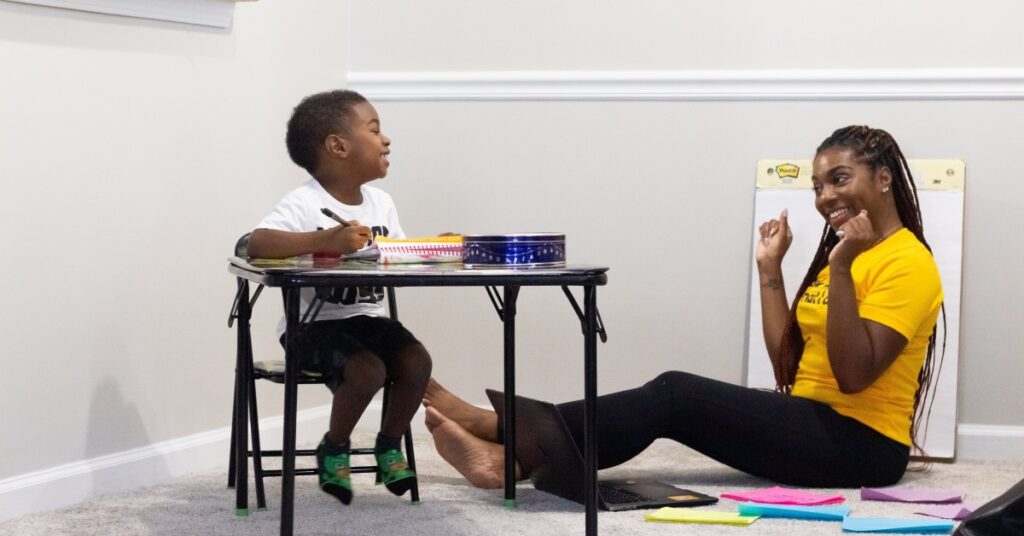
What Is a Master of Library and Information Science?
all LIS professionals must be information-literate. They can work in [...]
Think of your typical school art room. It’s a space decorated with paintings, drawings, mosaics, and sculptures, filled to the brim with the frenetic energy of student artists. Art class is a favorite for many elementary, middle, and high schoolers—and often a necessary chance to think outside the box, get creative, and collaborate. If you hope to share your passion for art with the next generation of learners, you may consider going back to the classroom as a teacher.
Visual arts teachers have the unique opportunity to make a big difference in students’ lives, and if you want to add teaching to your repertoire as a creative professional, a master’s degree in art education will give you the tools you need to excel.
For most graduate students in art education, a career as a teacher is the ultimate goal. Depending on your state of residence, a master’s degree might even be a requirement for continued teacher licensure.
Many universities offer certification options in their education master’s degree programs; for example, aspiring educators in Columbia University’s famed Teachers College can earn a Master of Arts with or without initial certification in Visual Arts Pre-K-12. Alternatively, students can earn a Master of Education (Ed.M.), which will move them a step closer to a doctoral degree. Should they choose to go the initial certification route, supervised student teaching will be a major part of their coursework.
A master’s in art education is the most direct path to becoming a K-12 art teacher, but that’s not the only job choice with this degree. If you want to teach workshops or classes for adults in community-based programs, work as a program coordinator at a museum, or perform community arts lectures, a master’s in art education will help get you there, too.
Your master’s program curriculum will include courses in pedagogy, research, art history, and studio art, and some programs will focus more on certain elements than others. If you want to brush up on your painting skills in addition to your teaching methods, look for a program that includes studio classes to give you hands-on experience. Boston University’s online M.A. has an optional Summer Studio program and an optional study abroad opportunity in Venice, Italy, where students can focus on art history or studio classes.
Most programs also feature a capstone project and/or a student teaching component. If you’re going for your teaching certification, your art education program faculty will support you through that process as well.
The purpose of a fine arts education program is to widen your areas of expertise and develop your pedagogical skills. No matter what program you choose, you’ll emerge with new artistic skills and further knowledge of educational theory and practice.
Your path to gaining a teaching license will be slightly different depending on whether you studied art or education in your bachelor’s degree program. If you studied art, a program like the Master of Arts with initial certification at Columbia Teachers College will be the right choice to land you in a Pre-K-12 classroom. This is because, while you already have substantial experience in art as a content area, you have not yet gone through a teacher preparation program.
If you majored in education as an undergrad or already earned your teaching certification through another process (like Teach for America), a program such as Teachers College’s Master of Arts non-certification track will be the better option. The assumption in non-certification programs is that you are already licensed to work as a teacher, and/or that you are most interested in working as an arts educator in the community rather than in a school environment.
Every state has different requirements for teacher certification, so you will need to consider where you would like to teach before selecting your arts education program. Some programs will prepare you to teach Pre-K-12, while others will ask you to pick between elementary, middle, and high school education. If you have your heart set on teaching high schoolers to express themselves and have no interest in spending a semester finger-painting with toddlers, be sure your program offers a secondary-only option.
To apply for a masters in art education program, you will need to submit undergraduate transcripts, two to three letters of recommendation, and at least one personal essay. Many programs also require applicants to submit GRE scores, and most teacher certification tracks expect students to have a certain number of credits in art history and/or studio art before starting their graduate studies. You may also be asked to submit a portfolio that shows your range across mediums, along with an artistic statement.
The number one requirement for a career in arts education is that you have a passion for the subject area. If your talent is in art history rather than creating art, you will still be able to spread your love of visual expression to your future students.
If you believe in the power of art to change hearts and minds, and you want to spend your life giving that power to others, a master’s in art education will prepare you for a long career doing exactly that.
Questions or feedback? Email editor@noodle.com

all LIS professionals must be information-literate. They can work in [...]

Elective courses can customize your MLIS degree to a career [...]

Do you intend to work in your community's public library [...]

For decades now, libraries have been attuned to new developments [...]

A more diverse teacher workforce could provide a key to [...]
Categorized as: Art & Art History, Education & Teaching